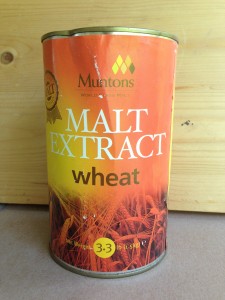
Every good hero needs a sidekick. This heroic barleywine gets a pale (ale) sidekick made from the leftover mash sugars.
Here is an all-grain, American-style barleywine, with an option to brew a second beer (a pale ale) from the leftover mash sugars. The barleywine wort is made by cutting wort collection short to collect only relatively high-gravity wort, and boiling it for 2.5–3 hours. The barleywine is strong, full-bodied and very hoppy. The leftover sugars in the grain bed can be used — along with some fresh grain — to make a pale ale. The pale ale uses the same hop varieties as the barleywine. If you get enough 1 oz. packets to brew the barleywine, the pale ale uses up most of the “leftovers.” You will also need to make a 1.25 qt. (1.25 L) yeast starter to ferment the pale ale.
You’ll need a 10-gallon (38-L) kettle to boil this wort, which is cutting things close. The directions for the pale ale differ depending on if you have a 10-gallon (38 L) or 15-gallon (57-L) mash tun. Having a second kettle and heat source to brew the pale ale is nice, but not required. Instructions for both batch sparging and continuous sparging are given. There is also an extract version of the barleywine.
Hero Barleywine and Sidekick Pale Ale
by Chris Colby
All-grain; English units
DESCRIPTION
Hero Barleywine is a big, American-style barleywine. It is similar to Bigfoot in strength and bitterness (88 IBUs), but not a clone. It is fermented with American ale yeast to yield an amber ale with a final gravity (FG) of 1.021, a full body and nearly 10% alcohol by volume (ABV).
Sidekick Pale Ale is made from the uncollected wort of the barleywine, with some supplemental grains added. It is a straight-up American pale ale with the flavor and aroma of several American hop varieties.


Recent Comments